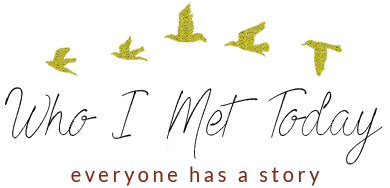Gianni Raffaelli – An Artisan in Florence
Daily dose of gelato in hand, I meander through the back alleys and narrow streets of Florence’s Oltrarno quarter. A few blocks from the Arno River, away from tourists and crowds, lies a quiet neighborhood of Florentine artists. Peering into the artisan workshops and studios, you discover a rich part of Florence’s culture and history. Bookbinders, silversmiths, paper marblers, sculptors, marble craftsmen, perfume makers, potters, shoemakers, metal workers. Some of these craftspersons apprenticed under a master or studied with an instructor. Many are members of artisan families, and the skills and practices were handed down through the generations.
Easy to reach by land or sea and situated ideally for trade, Florence is credited with being the birthplace of the Renaissance in the 14th century. Trade produced wealthy merchants and businessmen and an overall prosperous city. Exquisite sculptures, paintings, palaces, tombs, and religious monuments pay homage to the artists – Michelangelo, Brunelleschi, Donatello, Botticelli – who poured their talents into the rebirth of Florence, and eventually all of Europe. The affluent citizens of the time, rising from the bleak atmosphere of the Middle Ages, learned to appreciate the emerging arts. Artisans began to prosper as the public began to enjoy, and purchase, finely crafted articles.
His workshop is what I imagine a fine European home to be – dark polished furniture, warm wooden floors, and detailed prints of Italian landscapes and villas hanging on the walls. The mild-mannered, Italian artist, hunched over a drawing at his table, looks up to welcome me. Gianni Raffaelli’s specialty is etching, and he still employs the same technique developed in the old artisan workshops of Florence 500 years ago. In his soft spoken way, he proudly explains his prints are produced one at a time and entirely by hand.

Gianni’s Italian-accented English and my barely existent Italian cause both of us to be nervous communicators at first. As he begins to patiently describe his passion and the etching process to me, we relax and settle in and grow comfortable with one another. Reaching for a giraffe print I am admiring, Gianni tells me all of the prints filling his studio begin with him sketching the subject on paper. With his gracious and meticulous style, Gianni demonstrates how he smooths a wax mixture over a copper plate and places the sketch on top of the wax. Using specialized needles, he then draws the image in the wax – effectively tracing the subject. The needles remove the wax, exposing the copper. This slow and deliberate work calls for a calm, exacting personality. For simple subjects, like my giraffe, this process may take 3-4 days. For larger projects, Gianni says it is not unusual to work 3 months to prepare a single copper plate.

The initial sketch and the copper plate – it is not unusual to work 3 months to prepare a single copper plate
The next step? Dip the copper plate in an acid bath. The acid eats into the copper and etches the areas where the wax is removed. According to Gianni, “The more time the plate spends in the acid, the deeper the etch mark.” The deeper etch lines, after ink is added, create darker, more intense shades of black. He shows me a beautiful framed print of an intricate grouping of trees. Gianni points out the different tones and contrast – all dependent on the depth of the etch lines and the length of time the plate is in the acid.
Once the actual etching has occurred, Gianni scrapes the remaining wax from the plate and covers the plate with ink. As he tops it with a moistened piece of paper, he leads me to what looks like a giant contraption for making hamburger patties. He places the plate under this press and demonstrates. “You crank it down very tight, compress it. And that’s print number 1,” he smiles. “Take another piece of paper, ink the plate, compress, the ink from the plate transfers to the paper – now we have print number 2.” He stresses he only (!) repeats this procedure 150 times for each sketch. I wonder if the plate eventually wears out or if Gianni wants to limit his art to 150 prints? “As the print numbers go up, the plate starts to wear down,” he reveals. The etching starts to wear away, and you lose some of the clarity.

The tubes of watercolors and painstakingly tiny brushes on his worktable are for the prints he chooses to color by hand (up to 150 of them!) once the etching is done. Gianni adds his signature and print number and series (3/150, for example) and an identifying stamp to each piece of art.
For Gianni, etching was a hobby before it became a livelihood. He delights in tending to his prints from beginning to end – a true labor of love. Sadly, artisan workshops in Florence are slowly dwindling. Some call them a “dying art” and cite various reasons – technology, higher rents, modern labor regulations. Perhaps, more importantly, younger and newer family members simply don’t want to do what their parents and grandparents do to earn a living. Although Gianni and his wife work in the studio, their son prefers to handle the technology and marketing side of the family business.
As he wraps up the giraffe I couldn’t bear to leave behind, I ask Gianni what one thing he recommends I do before leaving this magical city. Without hesitating, the Florence native suggests a visit to Piazzale Michelangelo. “Walk up the little hill and make a photo – you will have a beautiful view of our entire city,” he recommends. As it turned out to be a big “little hill,” my husband and I took a taxi to the top. Enjoying the glorious sunset and panoramic view of the city, we made many, many photos.

Piazzale Michelangelo, Florence





